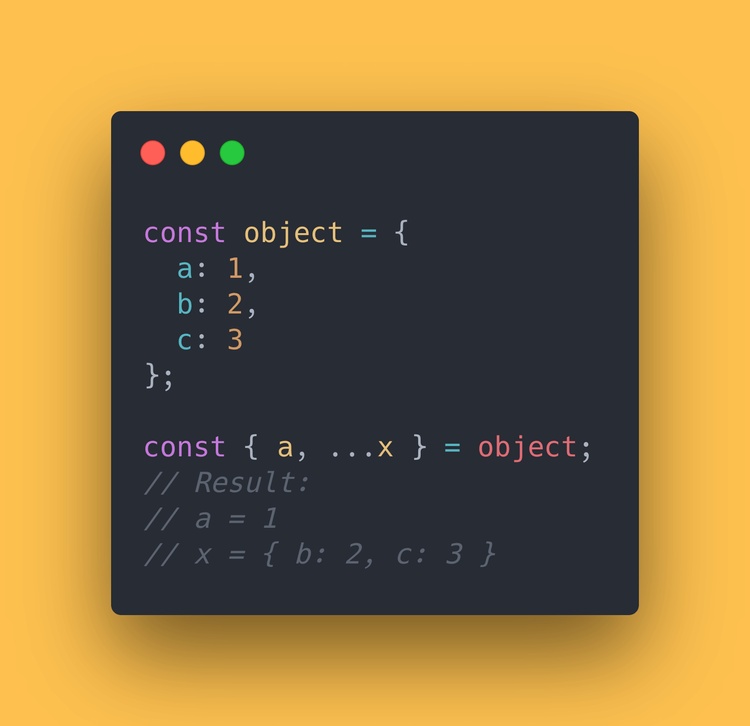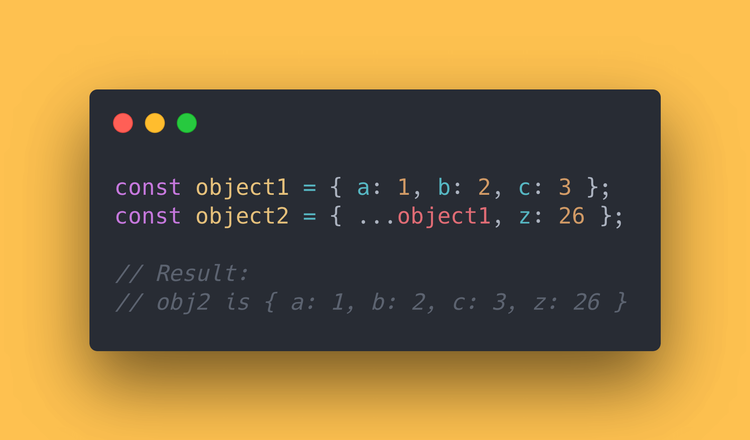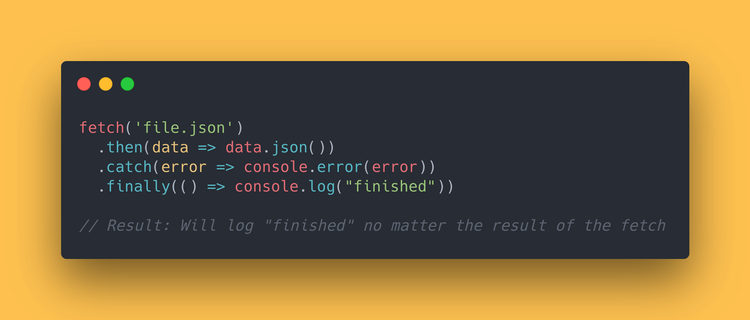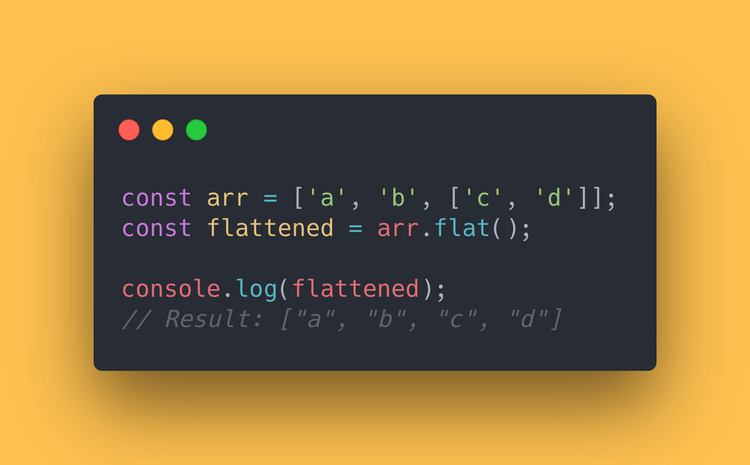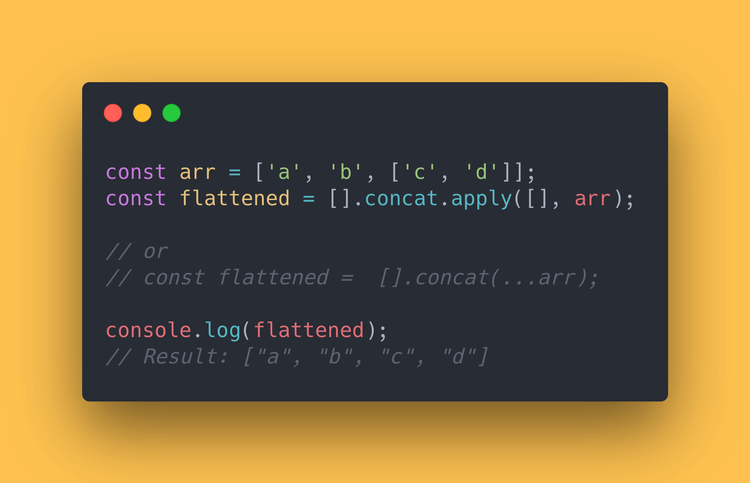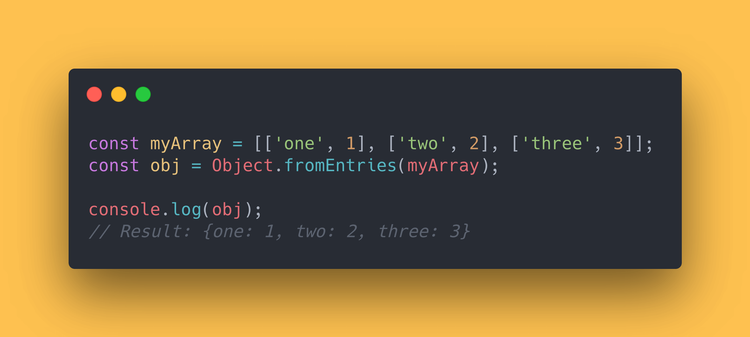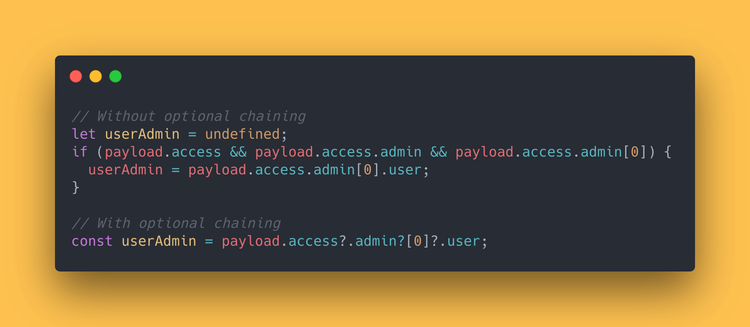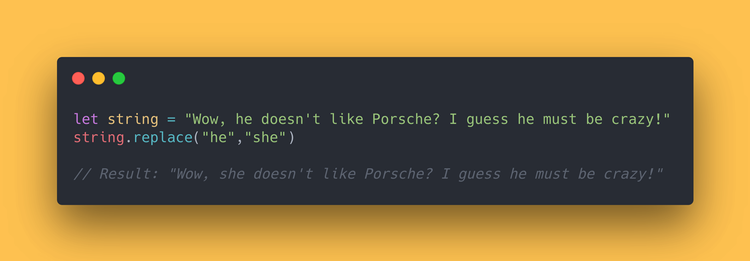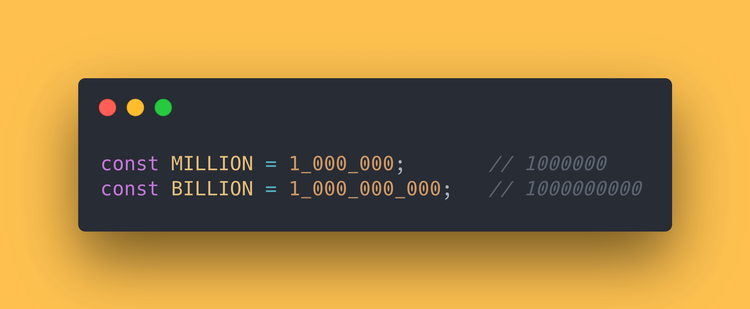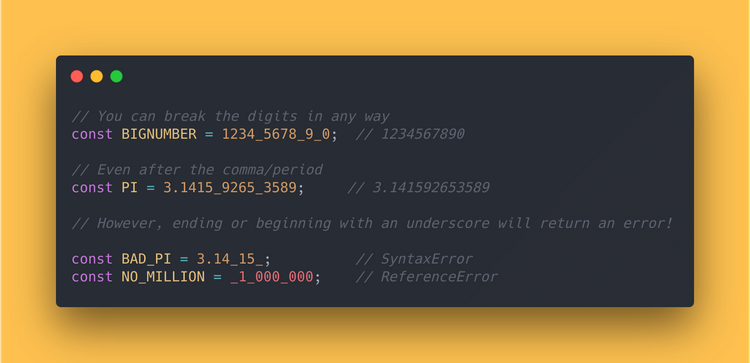The 8 Best JavaScript Features of the Last Four Years
03 March, 2021 • ☕️ 4 min read

In September 1995, a Netscape programmer named Brendan Eich developed a new scripting language in just 10 days.
It was originally named Mocha, but quickly became known as LiveScript and, later, JavaScript.
Since its invention, JavaScript has evolved to be one of, if not the BIGGEST programming language in the world.
Every year, ECMA releases a new JavaScript version with new features. In this article, we’ll go through the best and most useful features that have been introduced in the last four years.
ES2018
Rest/Spread Properties
One of the most interesting features added to ES2015 was the spread operator. This operator makes copying and merging arrays a lot simpler. Rather than calling the concat() or slice() method, you could use the ... operator:
const array1 = [10, 20, 30];
const array2 = [40, 50];
// Merge array2 with array1
const merge = [...array1, ...array2];
console.log(merge);
// Result: [10, 20, 30, 40, 50]ES2018 introduces the same concept but for objects:
const object = {
a: 1,
b: 2,
c: 3
};
const { a, ...x } = object;
// Result:
// a = 1
// x = { b: 2, c: 3 }The spread operator can be used within other objects. For example:
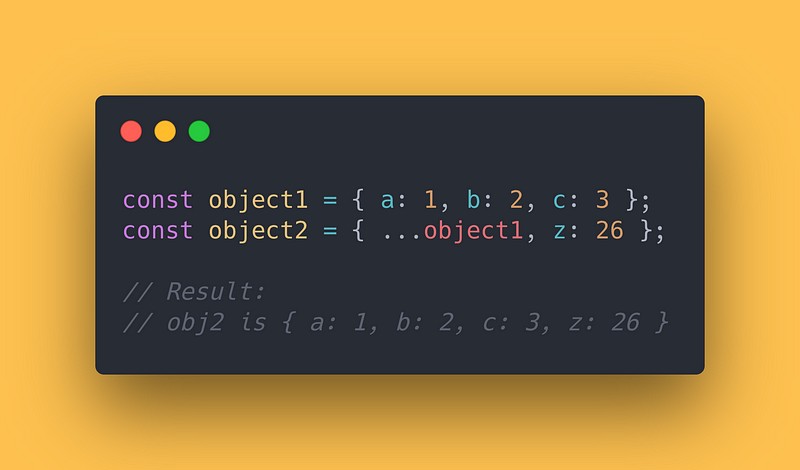
const object1 = { a: 1, b: 2, c: 3 };
const object2 = { ...object1, z: 26 };
// Result:
// obj2 is { a: 1, b: 2, c: 3, z: 26 }Promise.prototype.finally()
Another exciting addition to ES2018 is the finally() method.
Several JavaScript libraries had previously implemented a similar method, which proved useful in many situations.
With the finally() method, programmers will be able to execute a block of code regardless of the promise’s fate. Let’s look at a simple example:
fetch('file.json')
.then(data => data.json())
.catch(error => console.error(error))
.finally(() => console.log("finished"))
// Result: Will log "finished" no matter the result of the fetchES2019
flat()
The flat() method enables you to easily concatenate (“flatten”) all sub-array elements of an array. Consider the following example:
const arr = ['a', 'b', ['c', 'd']];
const flattened = arr.flat();
console.log(flattened);
// Result: ["a", "b", "c", "d"]Previously, you’d have to use reduce() or concat() to get a flat array:
const arr = ['a', 'b', ['c', 'd']];
const flattened = [].concat.apply([], arr);
// or
// const flattened = [].concat(...arr);
console.log(flattened);
// Result: ["a", "b", "c", "d"]Object.fromEntries()
Transforming data from one format to another is very common in JavaScript. To facilitate the conversion of objects into arrays, ES2017 introduced the Object.entries() method. This method takes an object as an argument and returns an array of the object’s own enumerable string-keyed property pairs in the form of [key, value].
But what if we wanted to do the opposite and convert a list of key-value pairs into an object?
ES2019 introduces the new Object.fromEntries() method, which enables you to do just that!
const myArray = [['one', 1], ['two', 2], ['three', 3]];
const obj = Object.fromEntries(myArray);
console.log(obj);
// Result: {one: 1, two: 2, three: 3}ES2020
Optional Chaining
This feature is going to make your code a lot more readable!
Optional chaining syntax allows you to access nested object properties without having to verify if the parent property exists every time.
See the comparison:
// Without optional chaining
let userAdmin = undefined;
if (payload.access && payload.access.admin && payload.access.admin[0]) {
userAdmin = payload.access.admin[0].user;
}
// With optional chaining
const userAdmin = payload.access?.admin?[0]?.user;Instead of declaring a let variable and including some condition to affect its value, I can do it in one line without any condition and by using a const.
If the property is not found, undefined will be returned. Super helpful!
Nullish Coalescing (??)
Nullish coalescing adds the ability to truly check nullish values instead of falsey values. What is the difference between nullish and falsey values, you might ask?
In JavaScript, a lot of values are falsey, like empty strings, the number 0, undefined, null, false, NaN, and so on.
However, a lot of times you might want to check if a variable is nullish — that is if it is either undefined or null, like when it’s okay for a variable to have an empty string, or even a false value.
In that case, you’ll use the new nullish coalescing operator, ??
Can you spot the difference between || and ??:
console.log(0 ?? true) // 0
console.log(0 || true) // true
console.log('' ?? 'Hello World!') // ''
console.log('' || 'Hello World!') // 'Hello World!'
console.log(false ?? true) // false
console.log(false || true) // true
console.log(NaN ?? 5) // Nan
console.log(NaN || 5) // 5
console.log(null ?? true) // true
console.log(null || true) // trueES2021
String.prototype.replaceAll
String.prototype.replaceAll() replaces all occurrences of a string with another string value.
In JavaScript, the .replace() method will currently only replace the first instance of a pattern.
 to merge 2 arrays](/static/9211c69d25f113ee16bd1ec517e821c4/e9985/eshistory-1.png)
